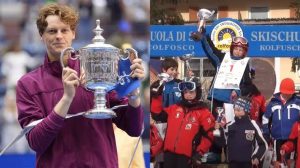
shocking new: jannik sinner have reprogress his development of symbols…

**Shocking News: Jannik Sinner’s Remarkable Progress in Symbol Development**
In a surprising turn of events, Jannik Sinner, the rising star of tennis, has made significant strides in the development of his symbolic representation techniques. This development comes as a shock to many, as Sinner is primarily known for his exceptional skills on the court rather than any artistic or symbolic pursuits.
Sinner’s journey into the realm of symbols began as an exploration of personal expression, a way to communicate the emotions and experiences he encounters in the high-pressure world of professional tennis. His interest in symbols parallels his growth as an athlete, where the mental aspect of the game is as crucial as physical prowess. In recent months, Sinner has focused on integrating these symbols into his training routine, enhancing his mental resilience and focus.
What sets Sinner apart is his unique approach to this development. Drawing inspiration from various cultures and historical contexts, he has crafted a series of symbols that reflect not only his personal journey but also the essence of the game itself. Each symbol encapsulates a specific emotion or experience, ranging from the elation of victory to the challenges of defeat. This innovative approach aims to help him visualize and channel his thoughts during critical moments in matches.
Sinner’s progress has not gone unnoticed. Coaches and sports psychologists have begun to take interest in his methods, recognizing the potential benefits of incorporating symbolic representation into training regimens. By using these symbols, athletes can create mental anchors, aiding concentration and emotional regulation during competitions. Sinner’s integration of this technique has sparked discussions about the importance of mental training in sports, which often takes a backseat to physical conditioning.
Moreover, Sinner’s symbolic system has resonated with fans and fellow athletes alike. He has shared insights into his process through social media, fostering a dialogue about the intersection of sport and art. This has not only broadened his appeal beyond the tennis community but also highlighted the emotional depth that athletes experience, often hidden behind their competitive facades.
As Sinner continues to refine his symbolic development, the implications for his performance are intriguing. The mental aspect of tennis is critical, especially in high-stakes situations. By grounding his emotions in tangible symbols, Sinner could enhance his ability to maintain composure and clarity, potentially giving him an edge in matches. This innovative method could revolutionize how athletes approach mental conditioning, paving the way for future generations to explore similar techniques.
Critics, however, may question the practicality of such methods in a sport that often demands immediate physical responses and split-second decisions. Skeptics argue that while mental strategies are essential, the unpredictability of live competition may render symbolic techniques ineffective in critical moments. Nonetheless, Sinner’s willingness to experiment and embrace new strategies sets a precedent for innovation in sports psychology.
In conclusion, Jannik Sinner’s recent progress in developing a system of symbols represents a bold step in bridging the gap between athletic performance and personal expression. His journey reflects the evolving nature of sports, where mental fortitude is increasingly recognized as a vital component of success. As Sinner continues to explore this uncharted territory, the tennis world watches with bated breath, eager to see how this integration of art and sport will influence his career and potentially reshape the mental landscape of professional athletics.






